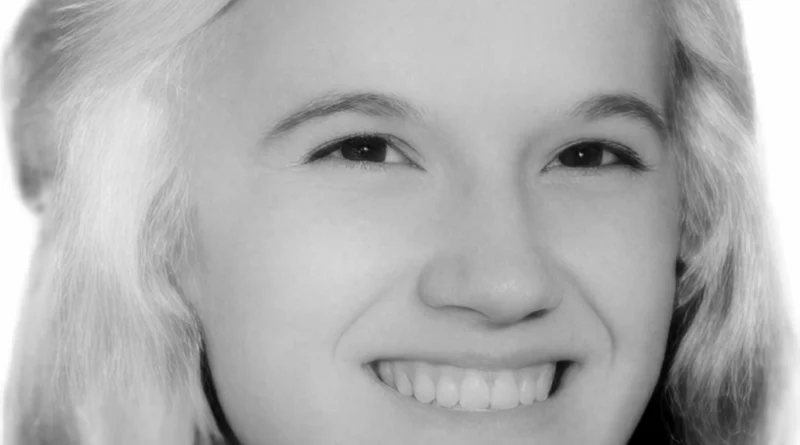Edna Christine Thorne Vanished in Philadelphia Pennsylvania
Edna Christine Thorne vanished on June 24, 1975, in Philadelphia, Pennsylvania, and her disappearance has lingered as a painful, unresolved mystery for half a century. At just 15 years old, Edna was a girl caught in a tangled web of family turmoil, alleged abuse, and systemic missteps. What began as a case initially treated as a possible runaway evolved, in the eyes of investigators and especially her family, into a likely abduction and suspected homicide. The details, rumors, and unanswered questions have persisted through decades, leaving her loved ones without closure and the case unresolved.
Background and Family Circumstances
Edna was born February 25, 1960. At the time of her disappearance, she was living in Philadelphia and had been in foster care earlier in her life. Family dynamics were strained. Reports from those close to Edna indicate she had recently had a heated argument with her older sister. She was not known to be a runaway—friends, family, and the circumstances of her last known movements suggested she had no intention of leaving voluntarily.
Adding to the complexity and the suspicions surrounding her disappearance were deeply troubling family allegations. Edna’s brother-in-law was accused by family members of having sexually abused her in the past, and there were unconfirmed whispers that Edna might have been pregnant. These allegations were never formally substantiated or adjudicated, but they became a locus of suspicion for the family. The brother-in-law was reportedly at or near the location where Edna was last known to be, and his presence there, combined with the history of alleged abuse, fueled enduring distrust among her relatives.
Last Known Whereabouts and Circumstances
On June 24, 1975, Edna Christine Thorne went to a stable in the Tioga Street area of Philadelphia. The stated purpose was to see a new horse—something that, for her, was presumably an ordinary visit to the stable. She was last seen leaving the stable or in its immediate vicinity. She had no money with her. At the time she disappeared, she was carrying only a pack of cigarettes, and she was dressed in a striped shirt and bell-bottom jeans. Her hair, naturally brown, had been dyed blonde. She was small in stature—around 5’1″ and approximately 105 pounds, with brown eyes.
No definitive witness account of an abduction exists in the public record, but the absence of any voluntary explanation for her disappearance, combined with the fact that she disappeared in broad daylight, led investigators to eventually doubt the initial runaway assumption.
Initial Investigation and Classification
The case was first handled under the assumption that Edna might have run away, a common early reflex in missing teenager cases of that era, especially when the missing person had recent family conflict. However, over time, investigators grew skeptical of the runaway theory. The lack of any contact from Edna, no signs that she attempted to leave the area on her own initiative, and the circumstances of her disappearance pointed toward something far more sinister.
The case was eventually classified as a non-family abduction, reflecting the belief—based on available evidence and lack of corroborated internal family coercion—that an outside party was involved. Yet the family’s lingering suspicions about the brother-in-law, given the alleged prior abuse and his proximity to the last known scene, created a shadow over that classification in their eyes. Official records suggest that no formal charges were ever brought against him in relation to Edna’s disappearance.
Tips, Leads, and Rumors
Shortly after Edna’s disappearance, her older sister received anonymous phone calls. The caller claimed knowledge of Edna’s clothing at the time she went missing and made an especially chilling claim: that Edna had been buried in Pennypack Park. Whether this tip reflected actual knowledge or was an attempt to manipulate and mislead remains unknown. No body was ever recovered from the park, and the tip did not result in a resolution.
Over the years, various rumors swirled within the community and among those who followed the case. Some repeated the family’s belief that the brother-in-law was somehow involved—either directly or through enabling circumstances—citing the combination of the alleged abuse history and his presence near the site as significant. Others considered the possibility of a stranger abduction, given the non-family abduction classification, noting that the area where she was last seen was not isolated and that someone could have seized an opportunity without immediate detection.
Law enforcement, constrained by the passing of time and limited forensic tools of the era, made no public breakthroughs. Edna’s case did not vanish from the files; records show that it was reviewed and maintained over the years. The availability of dental records, physical descriptors, and photographs meant the case had the foundational elements for identification if a body had surfaced. The enduring absence of any confirmed trace of Edna—no recovered remains, no verified sightings beyond that day—allowed the mystery to calcify into a cold case.
Theories and Speculation
Multiple theories have circulated in private and public discussion, though none have yielded conclusive proof.
One theory centers around the family’s suspicion: that the brother-in-law, whose presence near the scene and alleged history of abuse cast suspicion, had a direct role. Some in the family believe Edna’s disappearance was retaliation, a silencing, or the result of something escalating between them—especially if the unverified pregnancy rumors had any basis. However, the lack of official charges, absence of corroborated evidence made public, and the ambiguity around those allegations leave this theory unresolved and unprosecuted.
The alternative theory is that Edna was taken by someone outside her family circle. Supporters of this theory point to the official classification of her case as a non-family abduction and the possibility that someone in the vicinity of the stables saw an opportunity. The fact that she was alone, without money, and in a relatively public space might have rendered her vulnerable to a predator who moved quickly and without immediate detection.
Some have speculated that the anonymous tip about Pennypack Park could have come from someone close to the case—or it might have been a cruel hoax. The specificity of mentioning the park and her clothing suggested to some that the tipster had at least partial knowledge, but without further evidence, it remained a dead end.
Law Enforcement and Case Status
Over the decades, Edna’s case has remained officially open. She is listed in national missing persons databases and was documented in specialized missing-persons indices, with updates to her file as recently as the 2020s indicating the case was still being maintained. Her case is included in the records of organizations that compile cold case and missing persons information, and it is periodically revisited when interest resurfaces or when new investigative techniques (such as genealogical DNA methods) become available.
The Philadelphia Police Department was the primary investigating agency, and the case remains part of their unsolved missing persons caseload. The minimal publicly disclosed official movement on the case could reflect an internal ongoing active file, limited evidence to act upon, or prioritization challenges that often afflict decades-old missing-person investigations.
Impact on Family and Community
The disappearance of Edna Christine Thorne has had a lasting, intergenerational impact on her family. Her sister, who received the anonymous tips and was entangled in the earlier argument, has borne the weight of unanswered questions and unresolved grief. Family members have lived with the suspicion and stigma that swirl around both the unresolved disappearance and the allegations connected to it, making healing difficult. The tension between pursuing truth and lacking closure has shaped familial narratives and trust structures.
Within the broader community, Edna’s case became one of many missing-person mysteries from the 1970s that highlighted systemic issues—how early investigative assumptions (like runaway labeling) can delay critical early preserves of evidence, how vulnerable youth (especially girls in unstable familial situations) can fall into gaps, and how the lack of public transparency can both keep attention alive and obscure pathways to resolution. Her story is emblematic of missing girls whose cases never broke through for full public scrutiny, despite occasional resurgence in interest among true crime researchers and advocates.
Renewed Interest and Contemporary Relevance
After decades of relative public silence, renewed attention around Edna’s case has surfaced through podcasts, independent researchers, true crime commentators, and family advocates who have discussed her disappearance in formats that bring the human story back into focus. This modern attention often revisits the original facts, reexamines the family suspicions, and questions whether new investigative techniques—such as genetic genealogy, reinterviewing surviving witnesses, or reanalyzing any preserved physical material—could breathe new life into the file.
Edna’s case also sits in a broader cultural context where cold cases of missing teens from the 1970s and 1980s are being reexamined with more sensitivity to family trauma, abuse histories, and the societal circumstances that made some victims more vulnerable and their stories less prioritized. That contextual reappraisal does not automatically yield resolution, but it does ensure her name is not forgotten and encourages continued pressure for answers.
What Remains Unknown
Key unknowns have hardened into the core of the mystery:
- Who exactly was responsible for Edna’s disappearance? Was it the family member suspected by relatives, an unknown abductor, or someone else entirely?
- What, if anything, was the content and credibility of the anonymous caller’s knowledge about her clothing and alleged burial?
- Was there evidence suppressed, lost, or overlooked in the initial phases that could, if reevaluated with modern methodologies, point to a break?
- Did Edna ever get outside of the immediate Philadelphia area, or was she disposed of locally soon after the disappearance?
- Why were the serious family allegations (regarding abuse and possible pregnancy) never fully explored, or if explored, why did they not result in formal inquiry or prosecution?
The Human Element and the Search for Closure
At the center of this unresolved case is a teenage girl who had plans, relationships, and a life abruptly interrupted. The distinction between “missing” and “gone” is a tension her family has lived with—hope warring with the likely reality of a violent end. The absence of physical remains means there has been no funeral, no grave, no traditional closure ritual. That vacancy amplifies grief; it leaves questions hanging in conversations, memories, and family narratives.
For advocates and investigators who periodically revisit Edna’s case, the goal remains the same: to find definitive answers. Whether through stumbling on new witnesses, a long-buried confession, a previously overlooked piece of physical evidence, or emerging technology that connects genetic material to possible remains, the potential for resolution—however slim—continues to motivate those who refuse to let the case fade entirely.
Legacy and Continuing Vigilance
Edna Christine Thorne’s name is preserved in the catalogs of missing persons not just as a statistic but as a persistent plea: someone out there may still hold a piece of the truth, or know something that could resolve the decades of silence. Her story serves as a reminder of the fragility of justice when time passes, of the importance of listening to families’ instincts without allowing suspicion to ossify into accusation without evidence, and of the necessity for sustained attention on cold cases long after they leave headlines.
Those who care about Edna’s case—family, community members, cold case advocates—continue to keep her memory alive through retellings, through insistence that she not become merely a name in a database, and through the hope that someday the “who, what, when, and where” will become a full account, and her family will have the answer they’ve waited decades to receive.
Current Status
As of the latest known public information, Edna’s case remains unsolved and open. She would be 65 years old if alive. Her physical descriptors and identifying information remain on file with law enforcement and missing persons organizations. There is no public confirmation of any new, definitive lead that has resolved the case, leaving it among the enduring cold cases of Philadelphia’s past—one that continues to draw attention in niche true crime circles and among those committed to finding answers for long-missing young people.
Discover more from City Towner
Subscribe to get the latest posts sent to your email.




